Parque Nacional Manuel Antonio
September 3, 2006
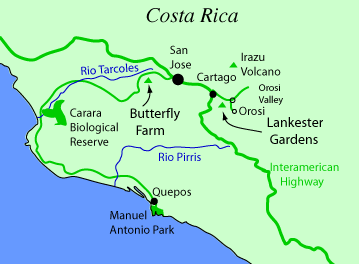 | The Manuel Antonio National Park is the most popular national park in Costa Rica. We planned a day tour there on Sunday. It was not extremely crowded, a benefit of visiting in t he off season. The park is about 7 miles from Quepos and our hotel, the Si Como No, was about half way between Quepos and the park. |


 |  Six of us in a tour group were led by Brian into Manuel Antonio. You usually have to either wade or take a small boat into the park, but it was low tide so two boats were just used as a bridge to get us across the narrow remaining waterway. |
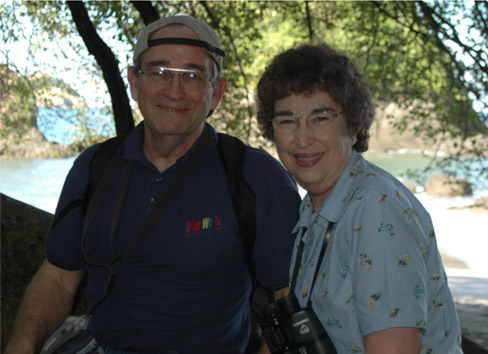
| The sun was shining and the conditions for this hike were much less rugged than the Carara hike. At this point in Manuel Antonio the trees of the rainforest run right down to the beach. |

|  |
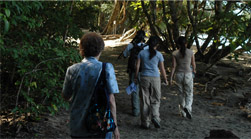 Brian led us along a sandy trail that paralleled the beach at times. He carried his spotting scope and tripod. He spotted this sloth high in a tree. It was very hard to see with the naked eye - very well camoflaged, and of course it doesn't move much. | 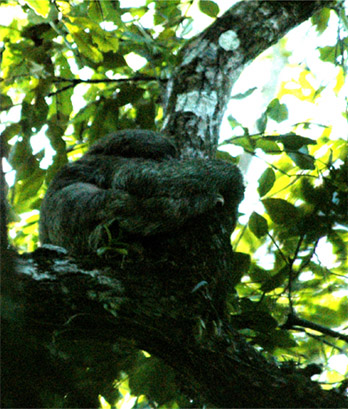 |
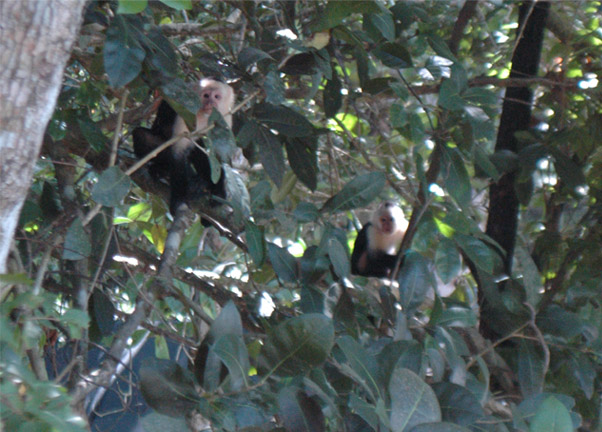
This view of two white-faced or capuchin monkeys was one of the best that I got. We heard lots of tales of close encounters, but we mostly saw them in the treetops. These and the ones in Carara were the first monkeys I had ever seen in the wild.
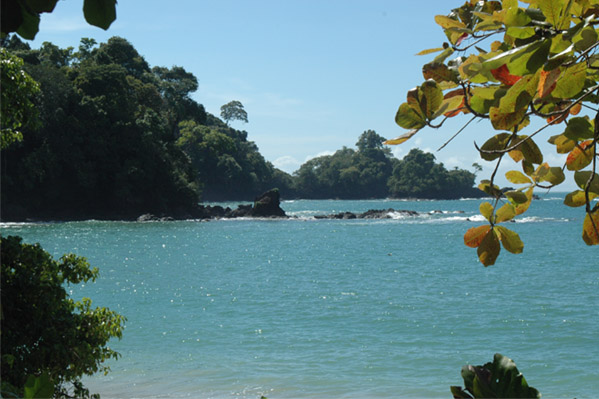
This view shows how the jungle comes right down to the water in this area. The rocks out in the water were reminiscent of the Oregon coast at points, but the turqoise color of the water looks tropical.
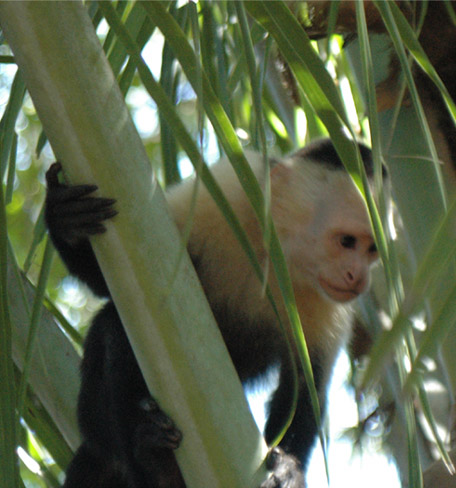
| This monkey was playing around in a palm tree about 8 feet above the ground, so this is the closest I got to any of the monkeys. |
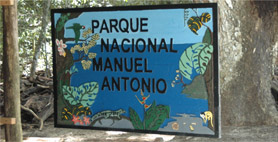 There was a nice picnic area in a place with some huge old hardwood trees mixed with the palms. The tour provided some nice fruit for us at that point. There was a nice picnic area in a place with some huge old hardwood trees mixed with the palms. The tour provided some nice fruit for us at that point.
| 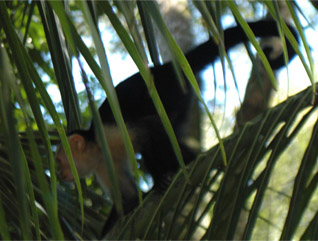 |
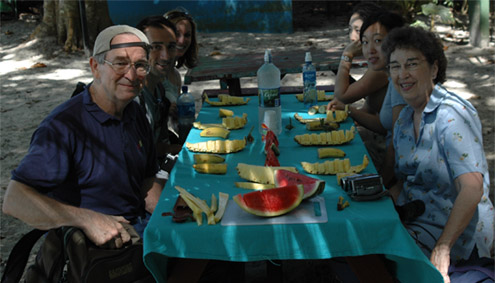
|  Hmm! I wonder if it is a coincidence that this is the place we got closest to the monkeys. |

|  |
The beach was very nice at this point and we got a good view of the coastline.
From there we moved on into the jungle along a good trail. I was amazed at the giant clusters of bamboo. Hundreds of canes, each over three inches in diameter. Below Brenda stands by a lush broadleafed plant growing freely in the jungle that would command big bucks in one of our nurseries. 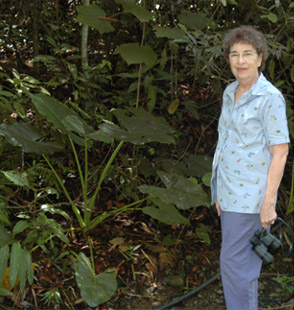
| 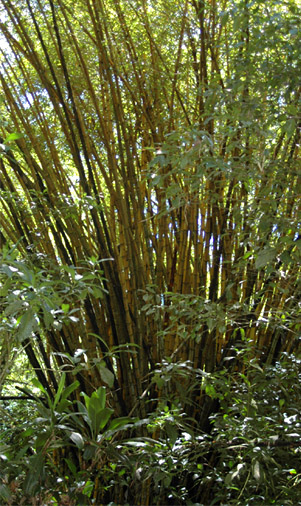 |
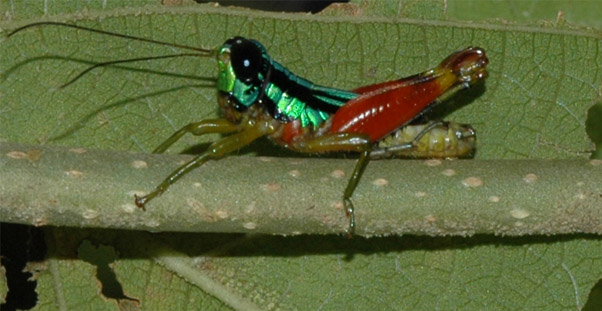
Dare we admit that the most surprising sight on this trip into the jungle was a grasshopper?! Brian had set up his spotter scope on the side of the trail and was looking about 10 feet into the jungle in an area of dense foliage. Very skeptical, I put my eye to the scope and could hardly believe that he had filled the scope with this neon grasshopper!
Brian explained to us that this dramatic grasshopper had a very specific diet, so that he knew where to look for them. When you saw that kind of small tree with holes in the leaves, you knew to look for these colorful grasshoppers. |  |
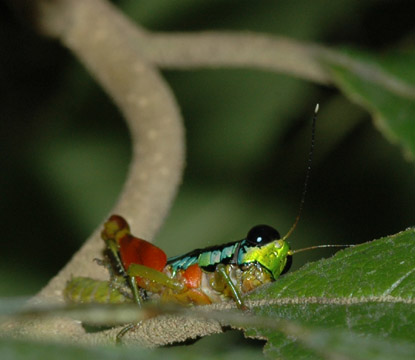 |  |
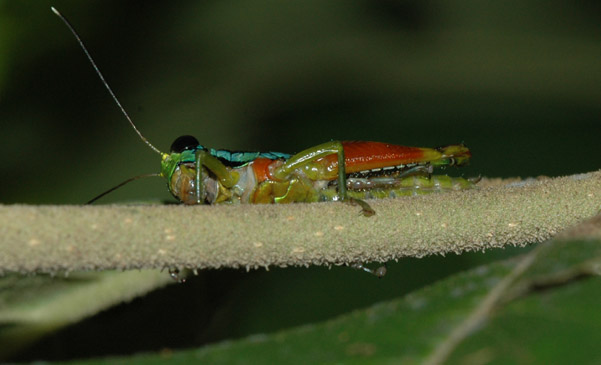
Part of the trail was overhung by these gigantic bamboo - the "largest grass in the world" was our guide's characterization of them. |  |
I saw the guide of another group unfold a large folded leaf beside the trail and saw the members of his group draw back. He kindly let me get a look at the female tarantula and her egg sack.
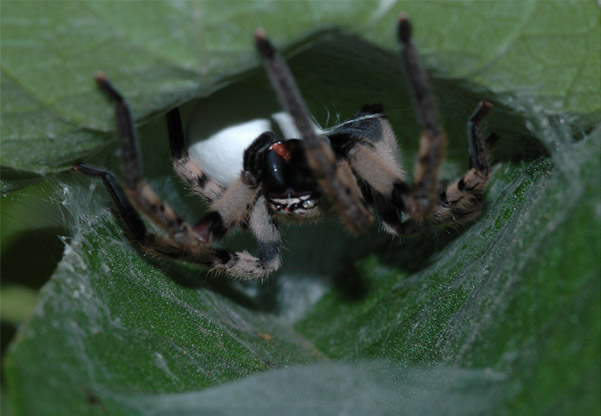
This tarantula was over 2 inches in size, but the male was less than a half inch. I wanted to get a picture of him for size comparison, but I was already behind my group so I moved on.
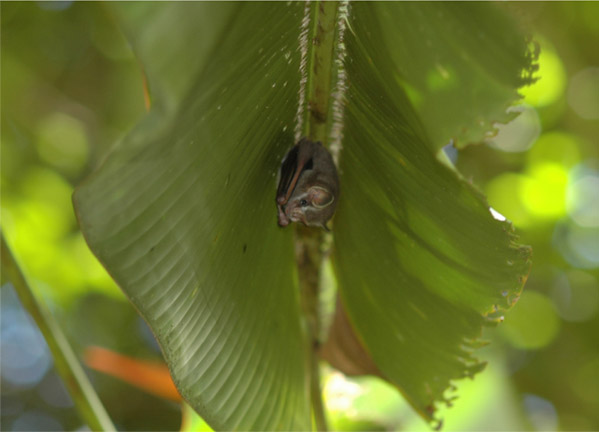
Staying on the slightly creepy side, we found this bat nappng under a palm leaf. We saw several bats, but this one was the only one low enough to really photograph. We were told that bats are very abundant in Costa Rica.
 | Our guide called this an "eyelash palm". It was common along the trail and added color to the jungle.  |
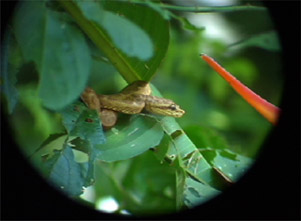
| 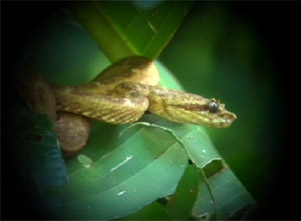 |

|  |
| This tiny snake as a pit viper is quite poisonous. It lies in wait for hummingbirds or other birds that visit the eyelash palm. If the birds have as much difficulty in seeing him as I did, they are in big trouble. At right is an indication of its range, so we were right in the middle of it. |  |
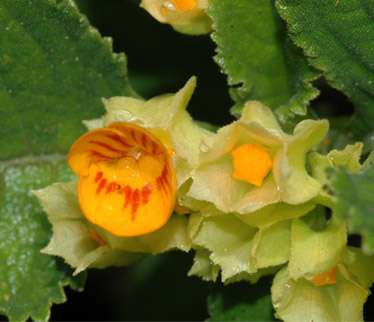 | This orange flower alongside the trail is shown about 50% larger than life size.  |
As usual, Rod was lagging behind the group taking pictures. As the group reached the exit to catch the van back to the hotel, Rod was still back on the trail taking a picture of this stinkbug.
| The Butterfly Botanical Garden |
2006
Costa Rica